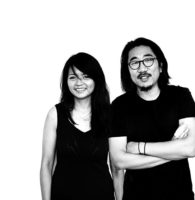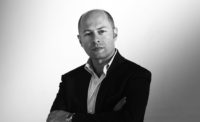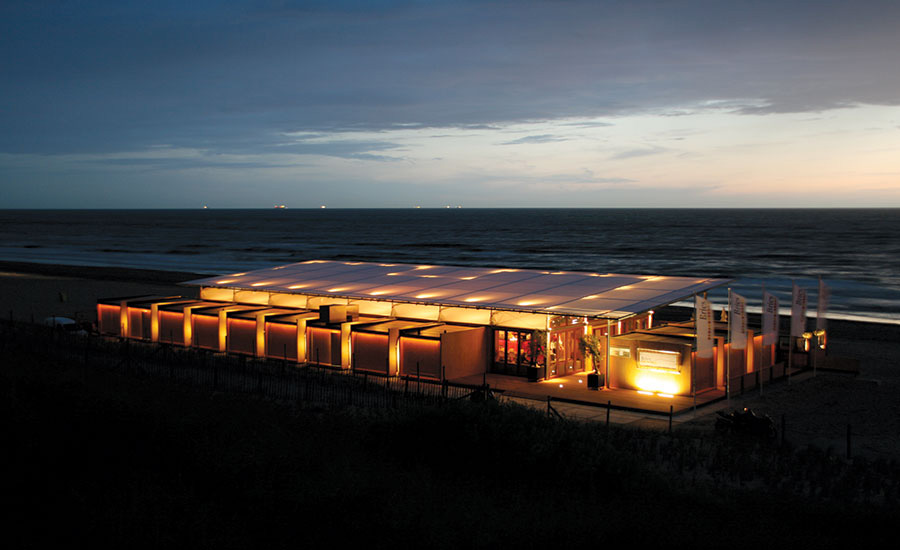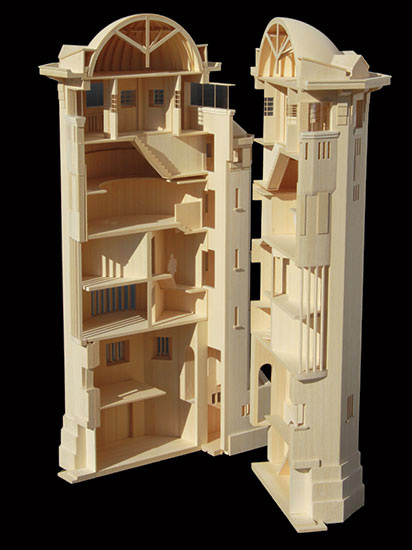Design Vanguard 2016: Studio Akkerhuis
An architect finds projects in his native Holland—and through a friendly collaboration with a former employer.

Bart Akkerhuis
Photo © Paul Heuzen

Meelfabriek
In addition to working on the master plan to reinvent this vast industrial complex in Leiden, Netherlands, Studio Akkerhuis is designing and restoring several of its buildings, which will include a 120-room hotel, loft apartments, shops, offices, and artist ateliers.
Image courtesy Studio Akkerhuis

Meelfabriek
In addition to working on the master plan to reinvent this vast industrial complex in Leiden, Netherlands, Studio Akkerhuis is designing and restoring several of its buildings, which will include a 120-room hotel, loft apartments, shops, offices, and artist ateliers.
Image courtesy Studio Akkerhuis

Galerie Rabouan Moussion
Using basic materials including untreated black steel, raw concrete, and glass, Studio Akkerhuis converted a former lampshade factory in central Paris into 3,700 square feet of exhibition space. It created a sequence of spaces that culminates in a 20-foot-high gallery for large installations.
Photo © Eddy Boulares

Bries Beach Club
Two volumes comprise this prefabricated temporary structure, which is erected in the spring, then dismantled in autumn for winter storage. The main open space of the club faces the sea, and a series of modular units made from cross-laminated timber—for the kitchen, office, storage, and bathrooms—plug into it.
Image courtesy Studio Akkerhuis

Water Tower
A disused water tower on the shores of the North Sea in Noordwijk, Netherlands, will accommodate a private house, public space in the reservoir, and a viewing platform on top.
Image courtesy Studio Akkerhuis






Architects & Firms
Paris
Bart Akkerhuis has come a long way since leaving his role as an associate with the Paris office of Renzo Piano Building Workshop (RPBW) to found his own studio. In two short years, Studio Akkerhuis has completed a beach club, a hotel, and a theater in the Netherlands, as well as two Paris galleries. Projects under way include the transformation of a neglected Leiden, Netherlands, industrial complex, the Meelfabriek, into a vibrant mixed-use community. “I started in September 2014 without any project or client but with the idea that this was always what I wanted,” says Akkerhuis, 45, who is Dutch but has lived in Paris for more than a decade. Now a range of ongoing work has grown the one-man firm into an office of 17 young architects from 12 countries.
In the literal sense, the path to autonomy has been quite short—the studio is just several hundred yards from Piano’s, a quick walk along the Rue des Archives. The proximity has made for a friendly quid pro quo between offices. “Their model-makers help me out if I need advice,” says Akkerhuis. “We throw parties and they’ll drink the champagne.” In addition to opening up its happy hours, the office—which has embraced several Piano alums on its staff—collaborates with RPBW on some projects, including the new Paris Palais de Justice currently under construction.
It is neither the size of the firm nor the size of its projects that Akkerhuis uses to measure success, but rather the breadth of its work. “Diversity is important,” he says. In France, firms are often siloed into one typology, like schools or social housing or theaters. Akkerhuis, on the other hand, lets anthropological and material research be a thread between projects.
“We do research in different ways,” says the architect. For a residential building within the Meelfabriek master plan, the firm has performed extensive analysis of its design of an exterior concrete structure, cast in situ, to meet current building regulations and meld aesthetically with the site’s existing patchwork of concrete and steel industrial structures. A new showroom for Italian furniture manufacturer Minotti has led the firm to study the future of shopping. In the same vein, a concept design for a futuristic shopping mall in Beijing won the firm an honorable mention in an ideas competition sponsored by a Chinese real-estate developer earlier this year.
To stay nimble and take advantage of the staff’s diversity, Akkerhuis eschews a hierarchical approach to idea development. “How we attack a project depends very much on what the project is. There’s not me handing over sketches to staff; it’s more horizontal and collaborative.” This may be a departure from his roots with RPBW, whose Italian leader is known for his project-defining concept drawings. But at least a couple of habits remain: innovative thinking, of course, and its necessary aid, caffeine. “I have an espresso machine—that’s one thing I learned from the Italians,” says Akkerhuis. Especially on late nights at the office, it’s a lesson from the past that will inevitably help with the hard work ahead.
Studio Akkerhuis
FOUNDED: 2014
DESIGN STAFF: 17
PRINCIPALS: Bart Akkerhuis
EDUCATION: Delft University of Technology, M.Arch., 2004
WORK HISTORY: 1998–2000, Renzo Piano Building Workshop, Paris; 2005–06, HOK, London; 2006–14, RPBW, Paris
KEY COMPLETED PROJECTS: Bries Beach Club, Noordwijk, 2014; Vesper Hotel, Noordwijk, 2014; Gallerie Rabouan Moussion, Paris, 2015; Beach Theater, Noordwijk, 2015 (all in Netherlands, except as noted)
KEY CURRENT PROJECTS: De Meelfabriek, Netherlands; Minotti concept store, Netherlands; social housing, France; Palais de Justice, Paris (for RPBW); 750 Houses master plan, Netherlands









